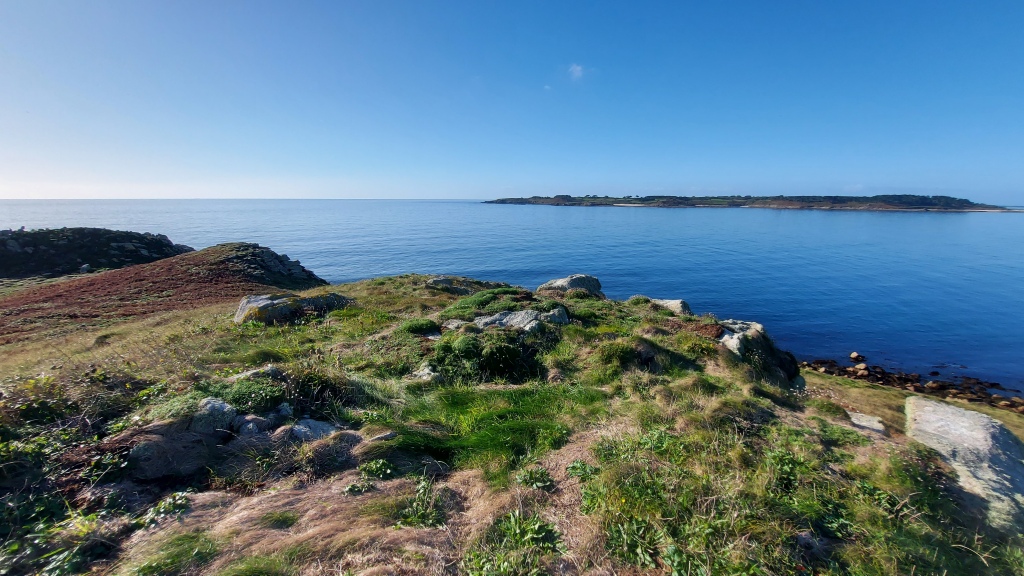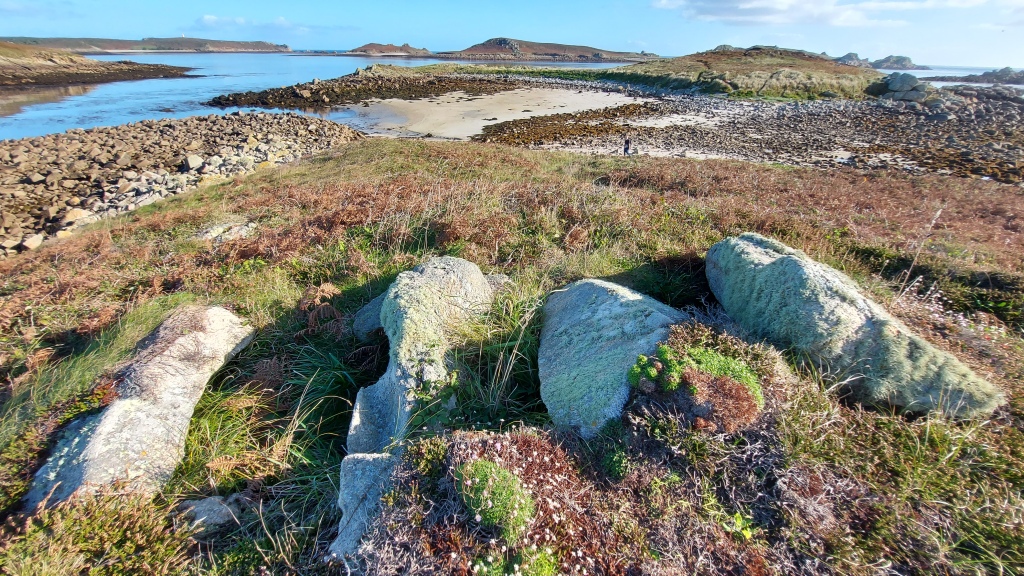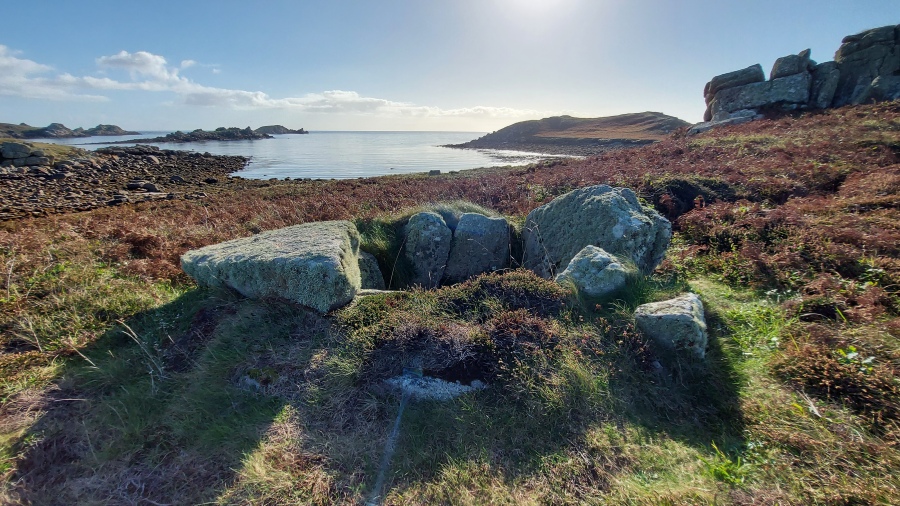Pictures from a visit in October 2022 to find the passage tombs on the uninhabited islands of Little, Middle and Great Arthur. These islands are part of the Eastern Isles of the Isles of Scilly. There are 6 passage graves which were photographed across the 3 Arthur islands, along with a cist on Little Arthur.
Great Arthur
The uninhabited rocky peak of Great Arthur rises from the sea as part of the Eastern Isles, Isles of Scilly. Visited by a boulder-strewn causeway from the nearby Middle Arthur this makes it one of the more difficult islands to access. It has a number of prehistoric cairns, passage graves and an ancient field system on the upper slopes of its hill, all of which make it a captivating spot to visit.
The group of tombs include three probable passage graves and two cairns which follow the spine of the ridgetop. Their elevated position make them visually prominent when viewed from a distance. Locally on the adjacent islands of Little and Middle Arthur there are more passage graves and cists. Together as a group they must have formed a significant ritual space. There are no recorded finds from the Great Arthur tombs but Middle Arthur was excavated in 1953 and the Earth Mysteries Guide to the Isles of Scilly p15 suggests that the grave of a female containing pottery was uncovered.
Once on the summit of Great Arthur the cairns and passage graves run in an approximate line between WSW to ENE at 66 degrees from north, although there is some deviation with the natural ridgeline. The orientation of the two largest passage graves were measured by Katherine Sawyer and both were orientated to the NNE to SSW around 19 degrees off north.
What has been described as a field system boundary runs between the two passage graves along the ridgeway. The HER 7222 entry suggests the graves are linked on the summit by a wall of the field system. There is banking and the system has orthostats spaced 1 – 3 meters apart. Central to these is a slab of stone which stands 0.75m in height. This stone can be seen from large distances away and is a prominent hilltop feature. This prehistoric wall forms the edge of a field system which extends down the hill. The HER record suggests that the ‘clearly visible orthostats are due to the lack of superficial lynchetting’. This in turn raises the question could the orthostats have been deliberately left as a prominent feature? and what if this summit row of stones has a duel purpose and acts not only as the highest extent to the field system but is also an interconnecting stone row between the passage graves and cairns. This would be in keeping with the stone rows which run between the passage graves on Kitten Hill, Gugh. If so it would make a fascinating addition to what is already an incredible ritual landscape.






Middle Arthur




Little Arthur





